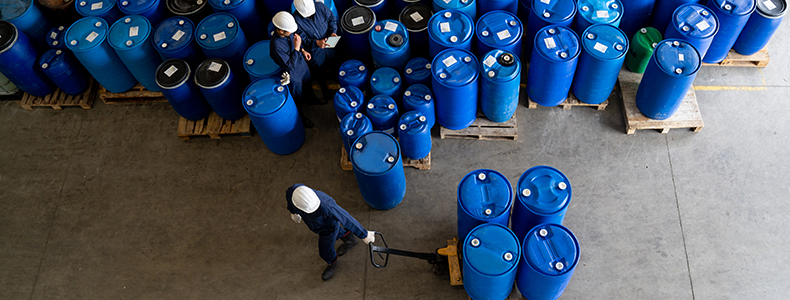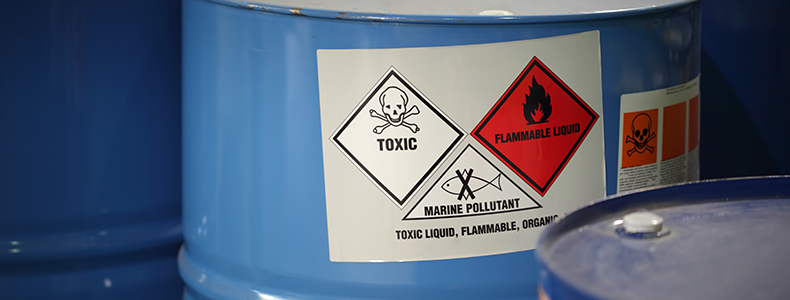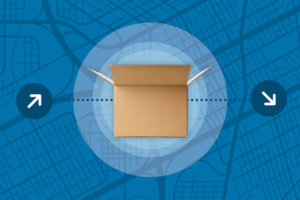Do you need to ship hazardous materials and are wondering how many classes exist for fully regulated items? The answer is nine. These range from everyday items like nail polish, battery-powered devices, and dry shampoo to highly dangerous substances such as explosives.
Why classify these materials? Simple—safety. If hazardous materials (HAZMATs) are mishandled, dropped, or leaked, they can injure workers, damage property, or harm the environment. That’s why regulations exist, and why proper handling, classification, and documentation are essential.
At uShip, we prioritize safe, legal shipping practices. uShip does not provide LTL Instant Rates for hazardous materials, and our Marketplace cannot accommodate or rescue hazmat shipments. If hazardous materials are accidentally or intentionally shipped without proper classification, shippers are responsible for all associated costs and regulatory compliance.
Additionally, freight carriers may decline pickup or transport of any items they deem unfit for LTL Freight. If a prohibited item is discovered during transit, the carrier may request a rescue by another carrier or return it to the origin—at the shipper’s expense.
This guide covers hazardous material classes, their importance, and why following regulations is critical for safety, compliance, and cost efficiency.
What Are Hazardous Materials?

Hazardous materials (HAZMATs) include solids, liquids, or gases that can harm people, animals, property, or the environment if not handled correctly. These substances require strict packaging and transportation methods to prevent leaks, fires, explosions, or exposure risks.
Common hazardous materials include:
✔ Explosives
✔ Flammable liquids (gasoline, alcohol-based solutions)
✔ Toxic substances (pesticides, industrial chemicals)
✔ Corrosives (acids, battery fluids)
✔ Radioactive materials
Important: Shipping hazardous materials requires specialized knowledge. At uShip, shippers are responsible for providing the correct classification and documentation—uShip cannot assist in hazmat compliance.
Why Proper Classification and Handling Matter
✔ Safety of People – Incorrect handling of HAZMATs endangers workers, transporters, and the public. Proper training and compliance prevent serious injuries or fatalities.
✔ Environmental Protection – Hazardous materials can contaminate air, water, and land, causing long-term damage to ecosystems.
✔ Fire and Explosion Prevention – Certain substances can ignite or explode if stored or transported improperly, making strict regulations critical.
✔ Regulatory Compliance – The U.S. Department of Transportation (DOT) mandates proper classification, packaging, and labeling under Title 49 CFR. Violations can result in severe fines or legal action.
✔ Cost Savings – Misclassification can lead to shipment delays, penalties, and unexpected costs. Avoid these by ensuring accurate documentation from the start.
✔ uShip’s Stance – Shippers must fully disclose hazardous materials before transport. If hazmat shipments are sent through uShip without proper classification, additional charges will apply, and the shipper assumes full responsibility.
Detailed Breakdown of Hazardous Material Classes

Each hazardous material class requires specific handling and compliance measures. Below is a breakdown of all nine classes, including examples, safety concerns, and handling requirements.
Class 1: Explosives
These substances can cause mass explosions, projection hazards, or fire risks if not handled properly.
✔ Common Examples: Dynamite, fireworks, flares, ammunition
✔ uShip Policy: uShip does not allow the transport of explosives on its platform.
Class 2: Gases
Compressed gases can be flammable, toxic, or asphyxiating, requiring proper containment and pressure regulation.
✔ Common Examples: Oxygen tanks, aerosol sprays, propane
✔ uShip Policy: Shippers must disclose hazardous gases, and LTL Instant Rates are not available for hazmat shipments.
Class 3: Flammable Liquids
These liquids ignite easily and require temperature-controlled storage.
✔ Common Examples: Gasoline, ethanol, acetone, oil-based paints
✔ Handling: Use DOT-approved, leak-proof containers.
Class 4: Flammable Solids
These materials catch fire easily, sometimes without direct ignition.
✔ Common Examples: Matches, magnesium powder, sodium metal
✔ Storage: Keep away from moisture and reactive chemicals.
Class 5: Oxidizing Substances & Organic Peroxides
Oxidizers increase fire risks, while peroxides can decompose explosively.
✔ Common Examples: Hydrogen peroxide, ammonium nitrate fertilizers
✔ Handling: Store separately from flammable or combustible materials.
Class 6: Toxic & Infectious Substances
These materials cause harm through inhalation, ingestion, or contact.
✔ Common Examples: Pesticides, biological waste, laboratory chemicals
✔ Handling: Use air-tight, spill-proof packaging with clear labeling.
Class 7: Radioactive Materials
Radioactive substances require extensive safety measures to prevent exposure.
✔ Common Examples: Medical isotopes, uranium, smoke detectors
✔ uShip Policy: uShip does not allow radioactive material transport.
Class 8: Corrosive Substances
These substances cause severe damage to skin, metals, and other materials.
✔ Common Examples: Battery acid, hydrochloric acid, strong cleaning agents
✔ Handling: Use specialized containers and protective gear.
Class 9: Miscellaneous Dangerous Goods
These materials don’t fit other categories but still pose risks.
✔ Common Examples: Lithium batteries, dry ice, asbestos
✔ Storage: Follow specific handling instructions per item.
Final Thoughts: How uShip Helps with Safe Shipping
At uShip, safety and compliance are top priorities. We do not rate on hazardous materials, and shippers must fully disclose hazmat shipments during the quoting process. If a hazardous shipment is sent without proper classification, the shipper assumes full responsibility for any additional charges, delays, or regulatory consequences.
Additionally, if a freight carrier refuses to transport a shipment due to prohibited or misclassified items, the shipper may be responsible for additional costs incurred.
If you’re uncertain about whether your shipment qualifies as hazardous, consult the U.S. Department of Transportation (DOT) guidelines and your freight carrier’s policies before listing on uShip.
By following the right procedures, you protect your business, ensure compliance, and keep transportation workers safe.
TL;DR: Key Takeaways on Shipping Hazardous Materials
✔ There are 9 hazardous materials classes, ranging from explosives and flammable liquids to toxic and corrosive substances. Each class has strict handling, packaging, and labeling requirements.
✔ Regulatory compliance is critical—the U.S. DOT (Title 49 CFR) mandates proper classification, documentation, and safety measures to prevent accidents, environmental damage, and legal penalties.
✔ uShip does not provide LTL Instant Rates for hazardous materials, and our Marketplace cannot accommodate or rescue hazmat shipments. If you ship hazardous materials without proper disclosure, you are responsible for all additional costs and regulatory compliance.
✔ Freight carriers may reject or return shipments containing prohibited or misclassified items, often at the shipper’s expense.
✔ Not all hazmat items are allowed on uShip—items like explosives, firearms, radioactive materials, perishable goods, and illegal substances are strictly prohibited.
Bottom Line: If you’re shipping hazardous materials, proper classification and compliance are non-negotiable. Understand the hazmat class, regulations, and carrier requirements before listing a shipment to ensure safe, legal, and cost-effective transport. 🚛



